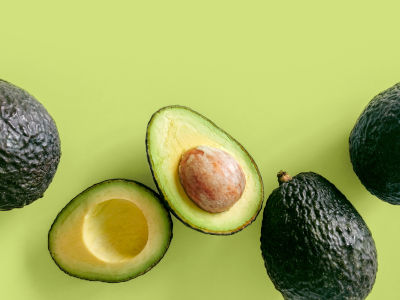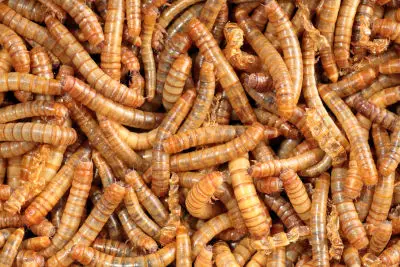Can Chameleons swim?
If you are interested to know if Chameleons can survive in the water you are in the right place. As a lizard keeper, it is important to know their limitations so you can keep safe.
Can Chameleons swim? No, however, they will attempt to float. There are some videos and clips of them attempting to swim, but in reality, they are not built for swimming. Other lizards can swim (click to see full article), but Chameleons are not natural swimmers.
| Are these foods dangerous for your Beardie? | |
| Avacado? Click here to learn, from this guide, if this food is dangerous |  |
| Superworms? Click here to learn, from this guide, if this food is dangerous |  |
Now that you know that Chameleons are not natural swimmers, let’s go a bit deeper and see if they can breathe underwater, water items that you should avoid to keep them safe, how they prefer to consume water and more.
Can chameleons drown?
Yes, they can drown. In fact, even very shallow bowls of water can pose a risk for chameleons.
To be honest, Chameleons do not want to drink from a bowl anyway so, you should not be providing this anyway, but more on this later on in the article.
But, if for some weird reason, you need to provide a water bowl in their enclosure, do not make it very deep. They are not very clever and can easily walk into this bowl and may never be able to get out.
Can chameleons breathe underwater?
No, they cannot breathe underwater. In fact, there is no known reptile or amphibian that can breathe underwater.
Fish use Gills to breathe underwater. Reptiles simply do not have this. So, it is not physically possible for them to do this.
It may be confusing for some people because they may argue that a crocodile can breathe underwater, right?…. Wrong!
The majority of its time is spent in water, but in reality, they do not actually breathe underwater. They submerge their body in the water and keep their nostrils and eyes above water level. This is so they can see their prey, keep breathing and spend large amounts there.
Do chameleons like to be sprayed?
No, they do not like to be sprayed directly. However, they do appreciate their enclosure being sprayed.
This spraying method is commonly termed as “misting”. It gives lizard keepers the ability to replicate the natural environment of rain. In the wild rain causes the trees to get wet.
Chameleons typically lick and drink the water from the trees, plants or branches left by the rain. Fortunately, rainwater is a reliable water flow.
So, if you have an enclosure and you are misting, be careful not to spray the lizard directly.
Why should you avoid artificial waterfalls?
This is because waterfalls may look aesthetically pleasing to the eye but in reality, they are a breeding ground for bacteria and germs. Obviously, this can be harmful to your lizard. Let Me Explain.
These artificial waterfalls constantly pump potentially dirty water back through the enclosure. If the water is soiled in any way for example if your lizard has produced feces in the water, or an insect died in the water. This tainted water is continuously pumped around the enclosure. Are you with me?
Meaning germs and bacteria generated by these things will keep being pushed through the system and passed on to your lizard.
In reality, if a human saw this defecation in the water bowl, it would be removed. But, the waterfall system will continually keep pumping the dirty water around. This is why it is not a good idea to use them.
Related questions:
How do you help a dehydrated chameleon? Naturally, chameleons have eyes that should be protruded from its body. Almost as if they are sticking out.
I mention this because if you notice this is not the case and they appear sunken, this could be a clear indication that they are suffering from dehydration. If this is the case, you will need to act immediately.
Dehydration at this level could cause serious problems for your chameleon. The reason this happens is that eyes are largely made up of water. And a substantial reduction in water causes the eyes to become sunken. This is clearly visible to the human eye.
The first thing you need to do is get them hydrated as soon as possible. My recommendation would be to take them to the Vet as soon as possible. In extreme situations, the vet may be able to hydrate them using an IV.
He may even advise you to attempt to hydrate your Chameleon using a pipette so that they can get some water directly.
Once you have stabilized the hydration, you need to understand how you can prevent this from happening in the future.
Clearly, there is an issue with your enclosure or your water source. Therefore, you need to add or change the way that you are providing water your to your chameleon.
If you are attempting to provide water using a bowl, then this clearly could be the problem.
You should also look into the humidity levels in your enclosure to make sure that they are optimal for a chameleon.
Are Automated water systems a good idea for your chameleon? Yes, in fact, they are one of the best ways of doing this, if it can fit into your budget.
They are a bit more expensive than just grabbing a water bottle and misting on a daily basis but they are very reliable and it means you don’t need any manual intervention.
These automated systems will simply require you to program them to say what frequency and when to switch it on and off.
For example, you could set your automated water system to spray in water for 15 minutes, three times a day. Meaning you could literally have your water source on autopilot.
As I discussed earlier, there are various different types and options. For example, the MistKing (Click for reviews on Amazon) provides a very fine spray.
This is different from the others that us a “rain effect”. But, again, this is fine it’s still automated and your Chameleon will get the water that they require.
Can you give your chameleon tap water? No, it is not advisable to give them normal tap water. However, some lizard keepers do this and argue that there is no issue with it.
As a precaution, I would advise not to use it. But, it is your call if you want to attempt this.
The reason I say not to do it is that water supply in different areas and countries varies quite a lot. The problem is water systems that we drink can have a lot of chemicals. They are used to clean the water.
As it is unclear exactly what chemical is in the water without actually testing it, it is a guessing game if it is sufficient for your chameleon or not.
If you want to be safe the best thing that you can use is distilled water. Distilled water is the closest thing that we’re going to get to regular rainwater that they are used to in their natural habitat.
Do Veiled Chameleons need a verticle enclosure? Yes, Veiled Chameleons do. This is because they are natural climbers. Also, they like to get their water from the droplets of water that come from the plants and leaves in their enclosure.
They expect these plants to be located in the top level of their enclosure and the plants to be sprayed with water on a regular basis to force the droplets down to the ground level so they can consume the water.
Are Yemen Chameleons Aggressive? No, Yemen Chameleons (click here for a guide on handling them) are not naturally aggressive. However, they don’t really like being handled. It is possible to do this, but you need to know what you are doing to make sure you do not aggravate them, which could result in you getting bitten.
